California is home to diverse trees, from towering redwoods to hardy oak trees. With so many types of trees to explore, it can be overwhelming to know where to start. This article aims to provide a complete guide to the different types of trees found in California, with photos and descriptions to help readers identify them.
Whether you’re an avid hiker, nature enthusiast, or simply curious about the trees in your local area, this guide is designed to be a comprehensive resource. From the iconic redwood forests to the more understated blue oak, we’ll cover a wide range of species throughout the state. By the end of this article, readers should better understand the different types of trees found in California and be able to identify them quickly.
If you’re looking for a book or resource to deepen your knowledge of California trees, this guide will also provide recommendations for further reading. With so many fascinating species to explore, we hope this guide will inspire readers to get out and explore the natural beauty of California’s forests and woodlands.
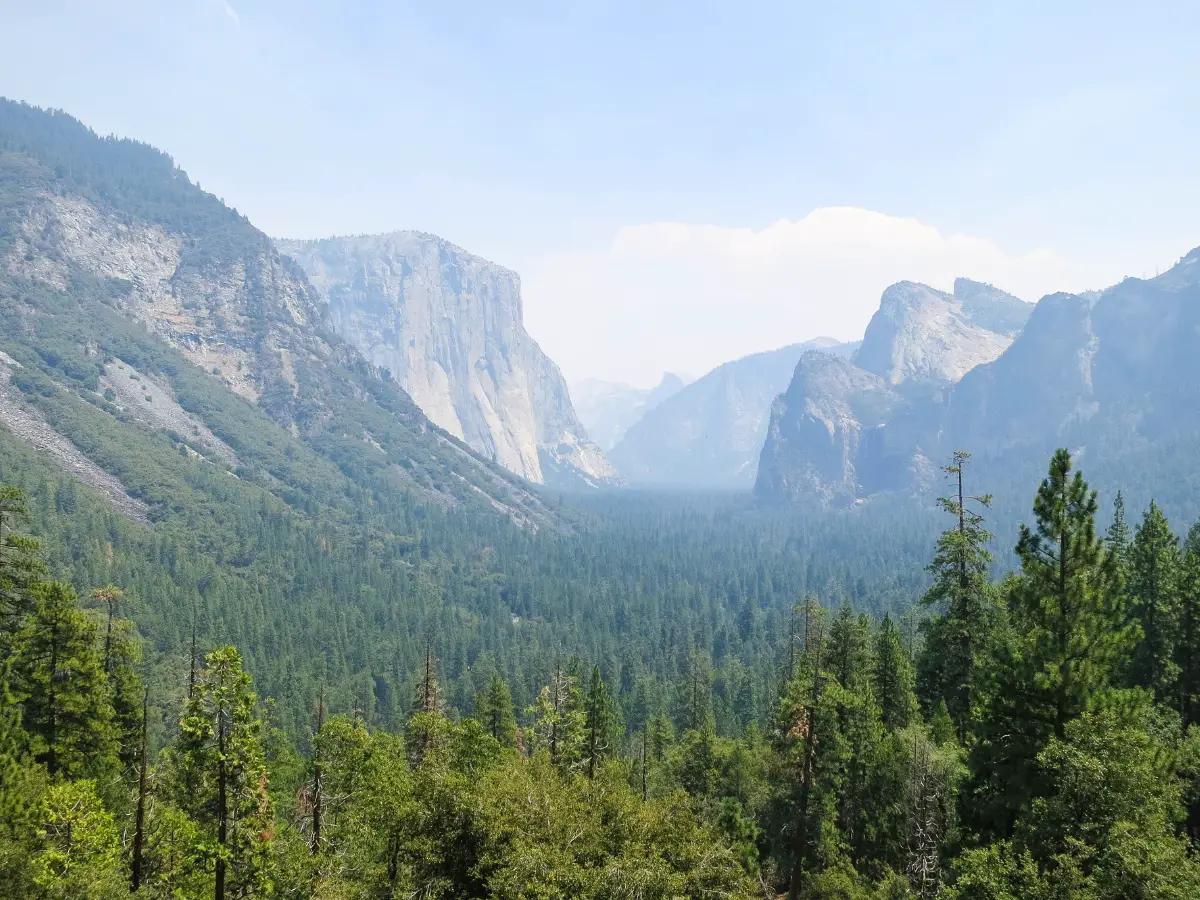
Overview of California Trees
California is home to a diverse range of trees, from towering redwoods to small shrubs. Many of these trees are native to California, while others have been introduced from other parts of the world. The state’s unique climate and habitats have given rise to many endemic species that are found nowhere else.
Native trees are an essential part of California’s ecosystem, providing habitat and food for wildlife, preventing erosion, and filtering the air we breathe. Some of the most iconic native trees include the giant sequoia, coast redwood, and Joshua tree. These trees are well adapted to California’s Mediterranean climate, which is characterized by hot, dry summers and mild, wet winters.
California’s trees are also an important economic resource, providing timber, paper, and other products. However, many of these trees are threatened by habitat loss, climate change, and invasive species. Conservation efforts are underway to protect these trees and their habitats.
Endemic species are also an important part of California’s tree diversity. These trees are found only in California and are adapted to the state’s unique habitats and climates. Some of these species include the Torrey pine, Catalina ironwood, and Santa Cruz cypress.
In addition to native and endemic species, California is also home to many introduced trees that have become naturalized. These trees include eucalyptus, acacia, and palm trees. While these trees are not native to California, they have become an important part of the state’s landscape and provide habitat for wildlife.
Overall, California’s trees are a vital part of the state’s ecosystem and culture. From towering redwoods to small shrubs, these trees provide habitat, food, and economic resources for both humans and wildlife.
Deciduous Trees in California
California is home to a variety of deciduous trees that thrive in the state’s climate. Here are some of the most common deciduous trees found in California:
Cottonwood Trees
Cottonwood trees are tall, fast-growing trees that can reach up to 100 feet in height. They are commonly found near rivers, streams, and other bodies of water because they require a lot of water to grow. The Fremont cottonwood, a subspecies of cottonwood, is native to California and is often found in riparian areas.

California Buckeye
The California buckeye is a small tree that grows up to 30 feet tall. It is known for its beautiful white flowers that bloom in the spring. However, the tree is toxic to many animals, including humans, and should not be ingested.

Box Elder
The box elder is a small to medium-sized tree that is native to California. It is known for its distinctive leaves, which have three to five leaflets. The tree is often found in riparian areas and can tolerate wet soil.

Water Birch
The water birch is a medium-sized tree that is commonly found near streams and other bodies of water. It is known for its distinctive bark, which is white and peels off in thin layers. The tree is also known for its small, triangular leaves.
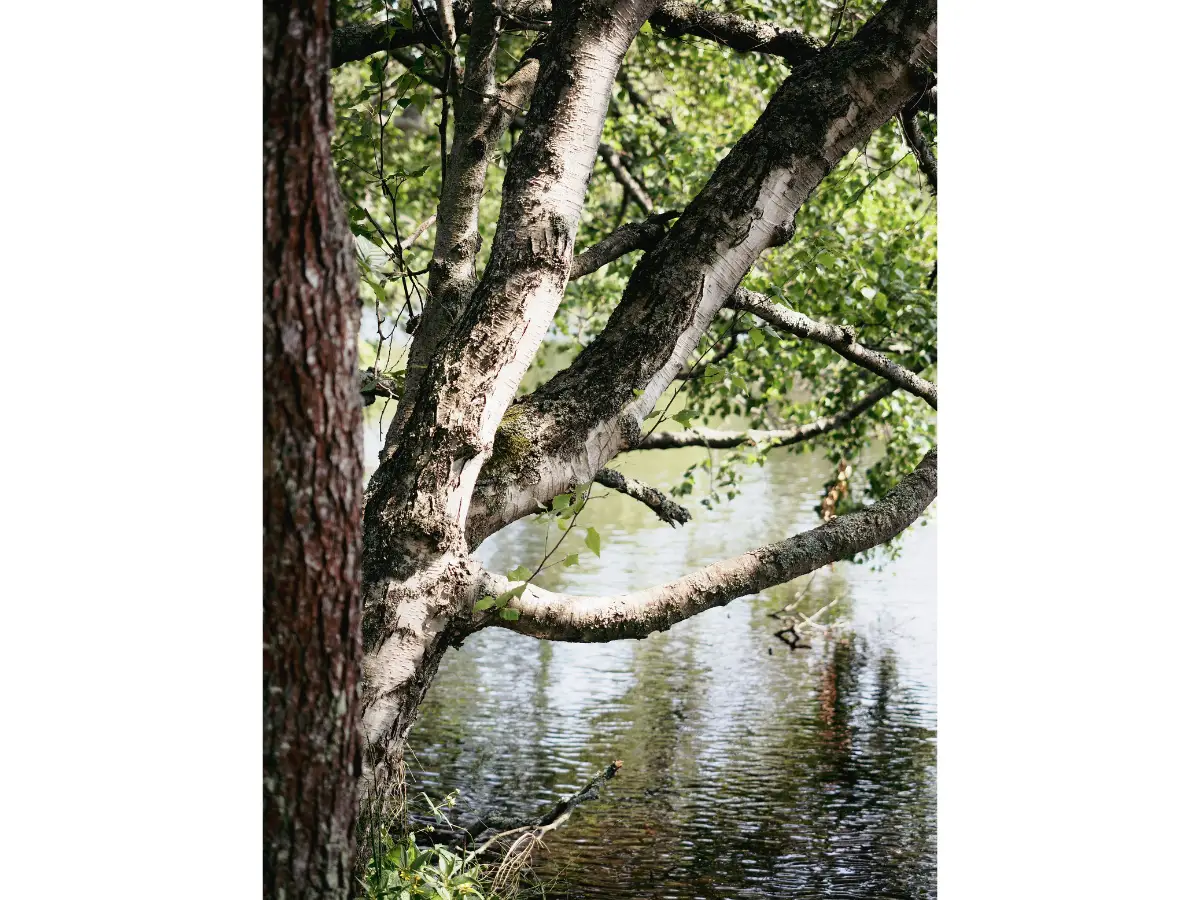
California Sycamore
The California sycamore is a large tree that can reach up to 100 feet in height. It is known for its distinctive mottled bark, which is white, gray, and brown. The tree is often found near streams and other bodies of water.

Quaking Aspen
The quaking aspen is a medium-sized tree that is known for its distinctive leaves, which tremble in the slightest breeze. The tree is often found in higher elevations and can tolerate cold temperatures.
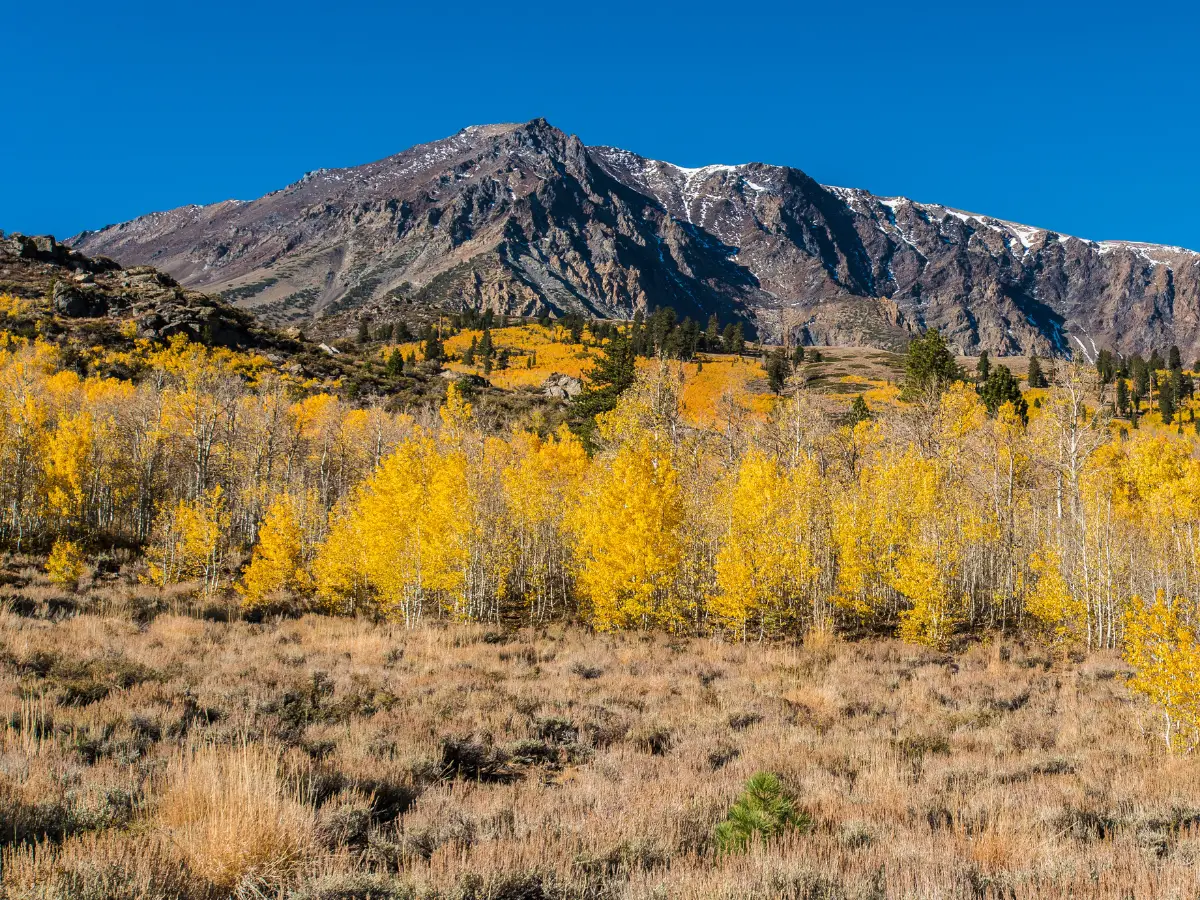
Black Cottonwood
The black cottonwood is a large tree that is commonly found near rivers and other bodies of water. It is known for its distinctive heart-shaped leaves and its ability to grow quickly.
Overall, deciduous trees are an important part of California’s ecosystem, providing habitat for wildlife and helping to regulate water flow in rivers and streams.
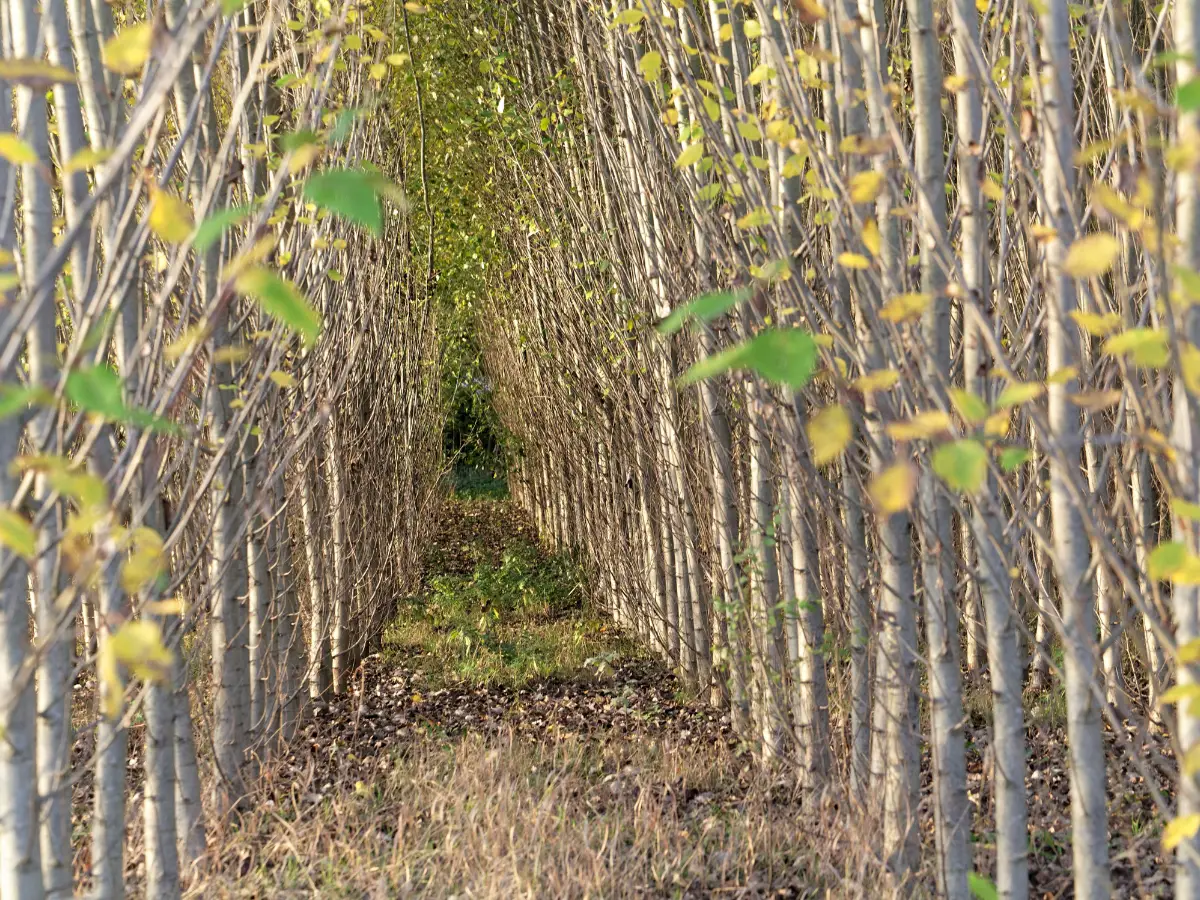
Evergreen Trees in California
California is home to a diverse range of evergreen trees that thrive in the state’s climate. These trees are known for their year-round foliage, which makes them an excellent addition to any landscape. In this section, we’ll take a closer look at some of the most common evergreen trees found in California.
Fir Trees
Fir trees are a popular choice for landscaping in California. They are known for their tall, narrow shape and their soft, fragrant needles. There are several different species of fir trees found in California, including the white fir, red fir, and Douglas fir.
Coast Live Oak
The Coast Live Oak is a large, evergreen tree that is native to California. It is known for its broad, spreading canopy and its thick, gray bark. The Coast Live Oak is a popular choice for landscaping because of its beauty and its ability to provide shade.
Blue Oak
The Blue Oak is a slow-growing, hardy tree that is found primarily on wooded hills in California. It is known for its deep blue-green leaves and its ability to thrive in dry soil.
California Black Oak
The California Black Oak is a deciduous tree that is found in the Sierra Nevada Mountains of California. It is known for its dark, deeply furrowed bark and its beautiful fall foliage.
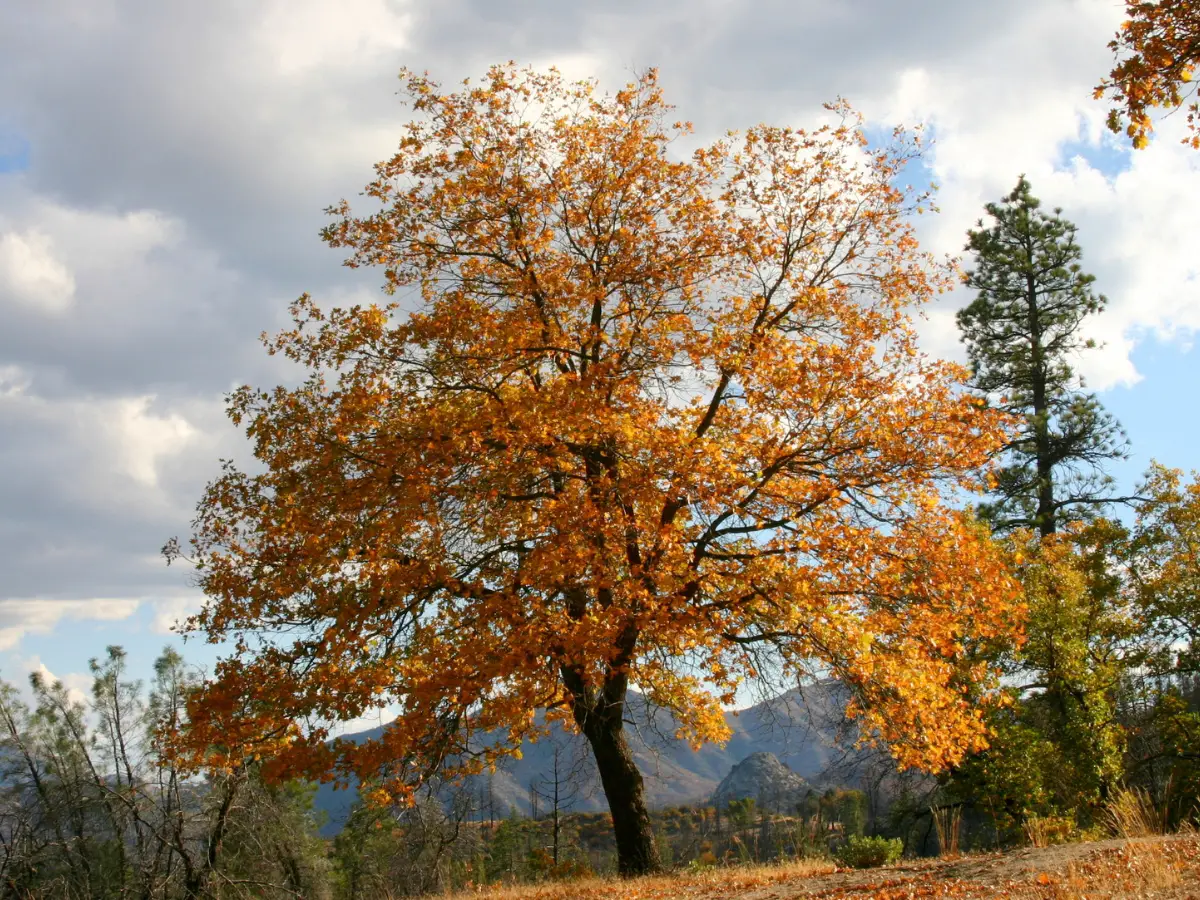
Canyon Live Oak
The Canyon Live Oak is a medium-sized tree that is found in the canyons and valleys of California. It is known for its dense foliage and its ability to provide shade in hot, dry climates.
Interior Live Oak
The Interior Live Oak is a large, evergreen tree that is found in California’s interior valleys. It is known for its broad, spreading canopy and its thick, gray bark.
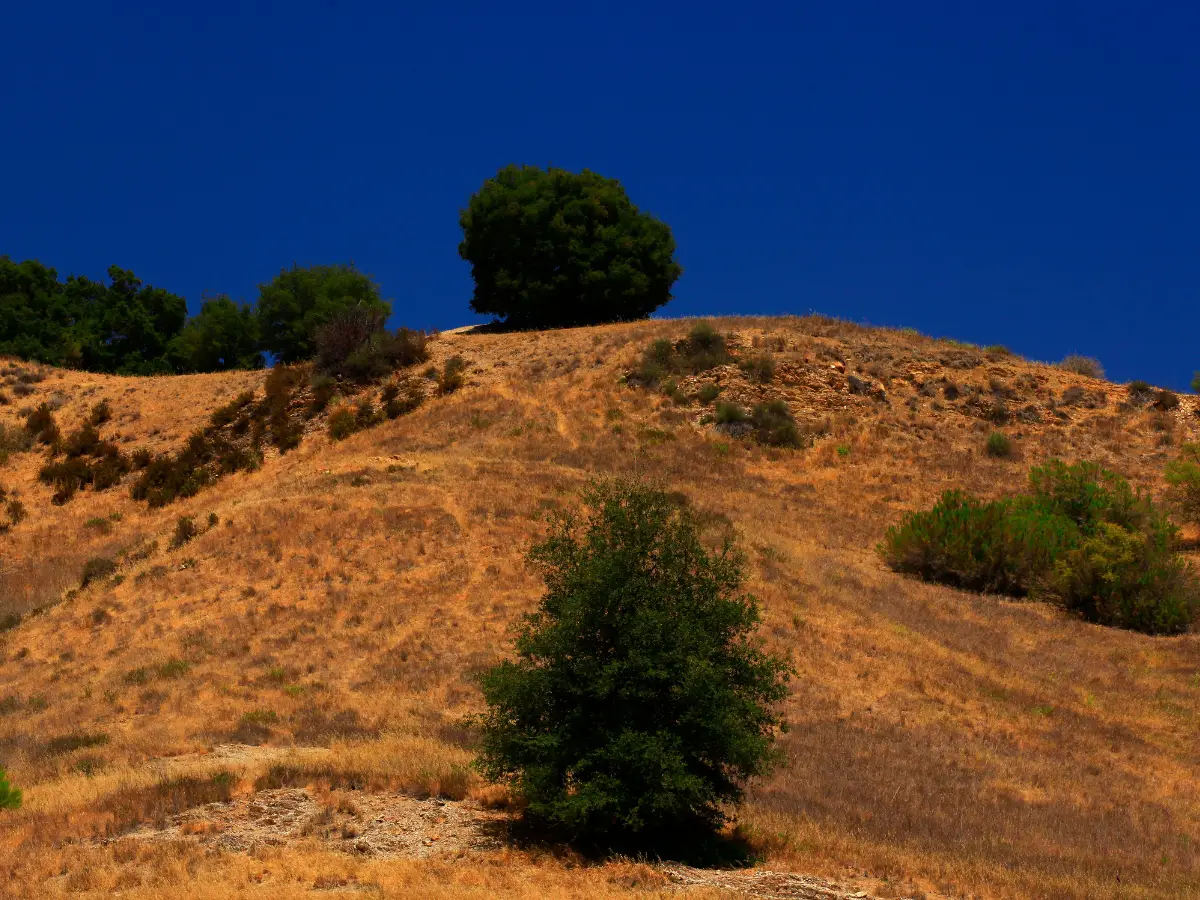
Incense Cedar
The Incense Cedar is a tall, evergreen tree that is found in California’s mountains. It is known for its aromatic wood and its ability to provide shade in hot, dry climates.
Coulter Pine
The Coulter Pine is a large, evergreen tree that is found in California’s mountains. It is known for its large, heavy cones and its ability to provide shade in hot, dry climates.
Coast Redwood
The Coast Redwood is an iconic tree that is found along the coast of California. It is known for its towering height and its ability to thrive in wet, coastal climates.

Giant Sequoia
The Giant Sequoia is a massive, evergreen tree that is found in California’s Sierra Nevada Mountains. It is known for its enormous size and its ability to live for thousands of years.
Joshua Tree
The Joshua Tree is a unique, evergreen tree that is found in California’s Mojave Desert. It is known for its twisted, spiky branches and its ability to survive in hot, dry climates.
Overall, California is home to a wide variety of evergreen trees, including firs, oaks, cedars, pines, redwoods, and sequoias. Whether you’re looking for a tree to provide shade, beauty, or both, there is sure to be an evergreen tree that will suit your needs.
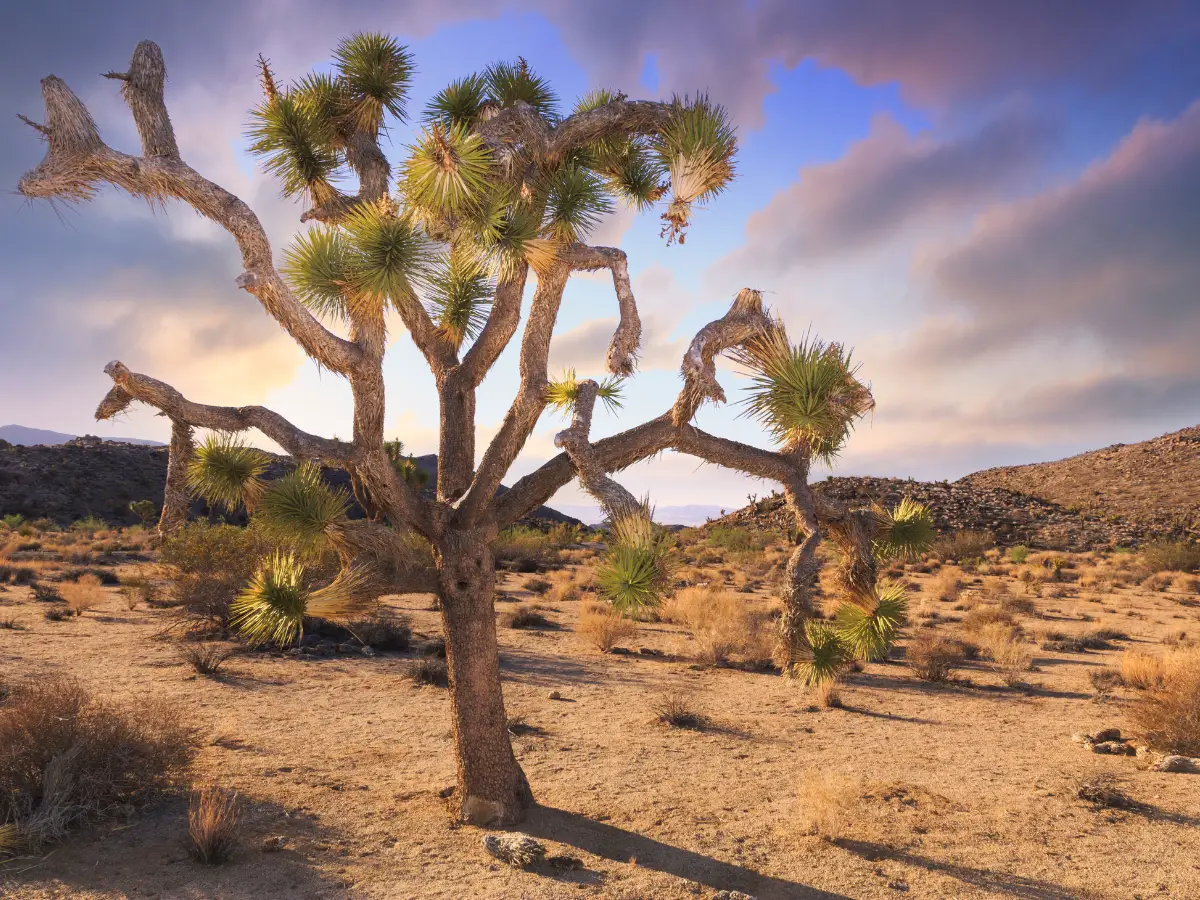
Unique California Trees
California is home to a diverse range of trees, each with its unique characteristics that make it stand out. Here are some of the most unique trees in California that you should know about.
California Black Walnut
The California black walnut is a medium-sized deciduous tree that grows up to 50 feet tall. It is known for its dark, edible nuts and its beautiful wood, which is used for furniture and flooring. This tree is native to California and can be found in the foothills of the Sierra Nevada mountains.

White Alder
The white alder is a fast-growing deciduous tree that can grow up to 80 feet tall. It is known for its smooth, grayish-white bark and its ability to grow in wet areas. This tree is native to California and can be found in riparian areas along streams and rivers.
Catalina Cherry
The Catalina cherry is a small evergreen tree that grows up to 30 feet tall. It is known for its glossy green leaves and its small, edible cherries. This tree is native to the Channel Islands off the coast of California.
Island Oak
The Island oak is a large evergreen tree that can grow up to 80 feet tall. It is known for its massive trunk and its ability to survive in harsh, windy conditions. This tree is native to the Channel Islands off the coast of California.
Engelmann Oak
The Engelmann oak is a medium-sized evergreen tree that grows up to 50 feet tall. It is known for its deeply lobed leaves and its acorns, which are an important food source for wildlife. This tree is native to California and can be found in the foothills of the Sierra Nevada mountains.
Desert Willow
The desert willow is a small deciduous tree that can grow up to 30 feet tall. It is known for its beautiful pink and purple flowers and its ability to survive in hot, dry conditions. This tree is native to the southwestern United States, including California.
Mountain Mahogany
The mountain mahogany is a small evergreen tree that can grow up to 20 feet tall. It is known for its twisted, gnarled branches and its ability to survive in harsh, rocky environments. This tree is native to California and can be found in the mountains of the state.
Blue Palo Verde
The blue palo verde is a small deciduous tree that can grow up to 30 feet tall. It is known for its blue-green bark and its yellow flowers, which bloom in the spring. This tree is native to the southwestern United States, including California.
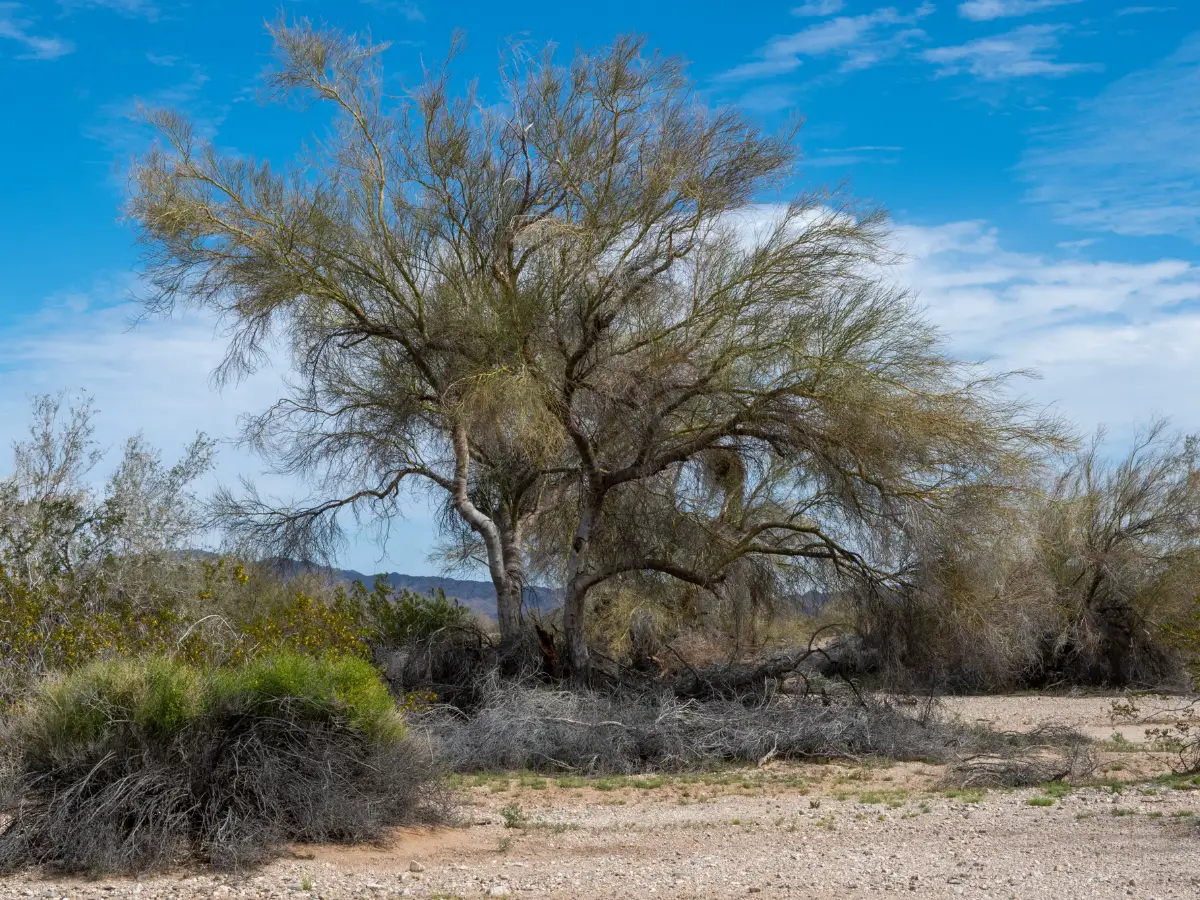
Foothill Pine
The foothill pine is a medium-sized evergreen tree that can grow up to 80 feet tall. It is known for its long, slender needles and its ability to survive in rocky, dry soil. This tree is native to California and can be found in the foothills of the Sierra Nevada mountains.
Torrey Pine
The Torrey pine is a rare, endangered species that grows only in certain areas of California. It is known for its twisted, gnarled branches and its ability to survive in harsh, windy conditions. This tree can grow up to 60 feet tall.
California Bay
The California bay is a medium-sized evergreen tree that can grow up to 80 feet tall. It is known for its fragrant leaves, which are used in cooking, and its ability to survive in wet areas. This tree is native to California and can be found in riparian areas along streams and rivers.
Oregon Ash
The Oregon ash is a medium-sized deciduous tree that can grow up to 80 feet tall. It is known for its deeply lobed leaves and its ability to grow in wet areas. This tree is native to California and can be found in riparian areas along streams and rivers.
California Walnut
The California walnut is a medium-sized deciduous tree that can grow up to 60 feet tall. It is known for its edible nuts and its beautiful wood, which is used for furniture and flooring. This tree is native to California and can be found in the foothills of the Sierra Nevada mountains.
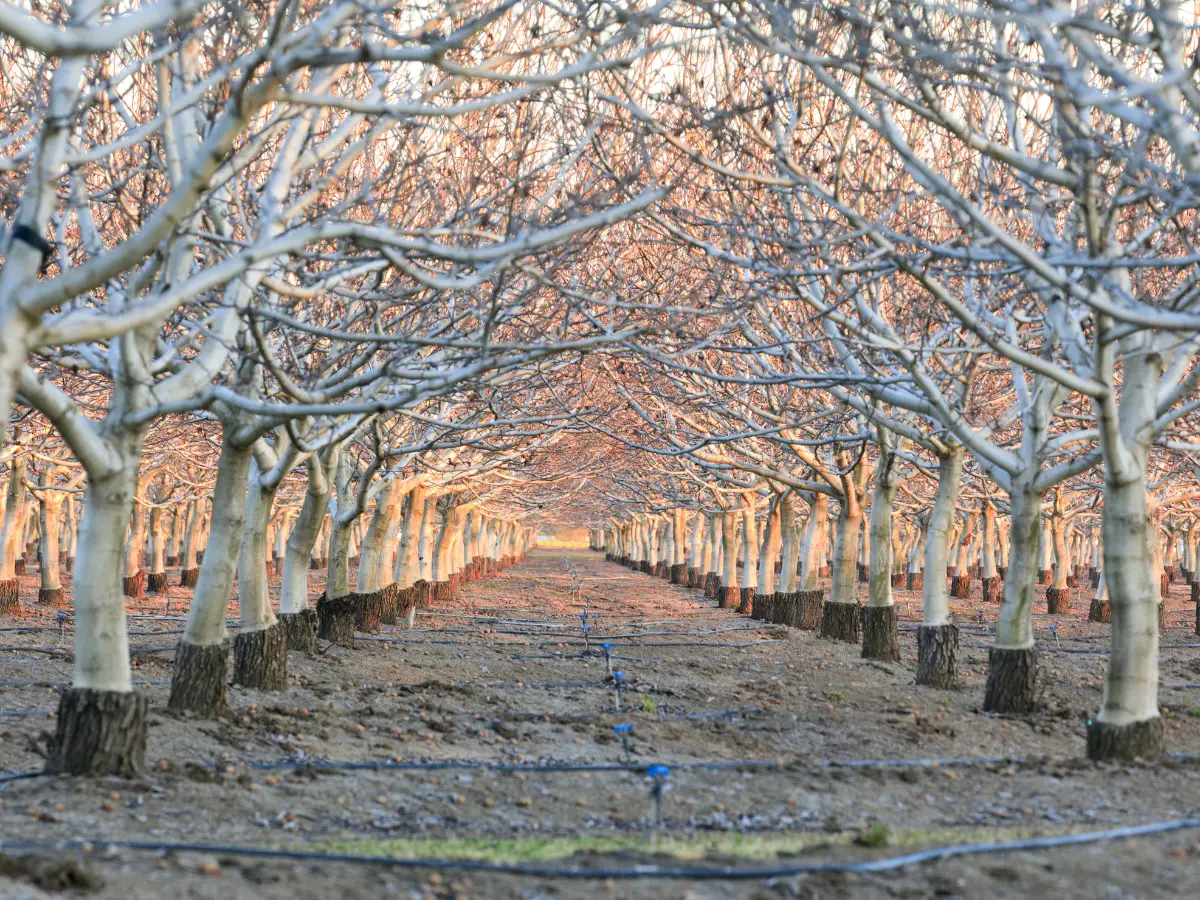
Scrub Oak
The scrub oak is a small evergreen tree that can grow up to 20 feet tall. It is known for its twisted, gnarled branches and its ability to survive in harsh, dry conditions. This tree is native to California and can be found in the mountains of the state.
California White Alder
The California white alder is a medium-sized deciduous tree that can grow up to 80 feet tall. It is known for its smooth, grayish-white bark and its ability to grow in wet areas. This tree is native to California and can be found in riparian areas along streams and rivers.
Pacific Madrone
The Pacific madrone is a medium-sized evergreen tree that can grow up to 80
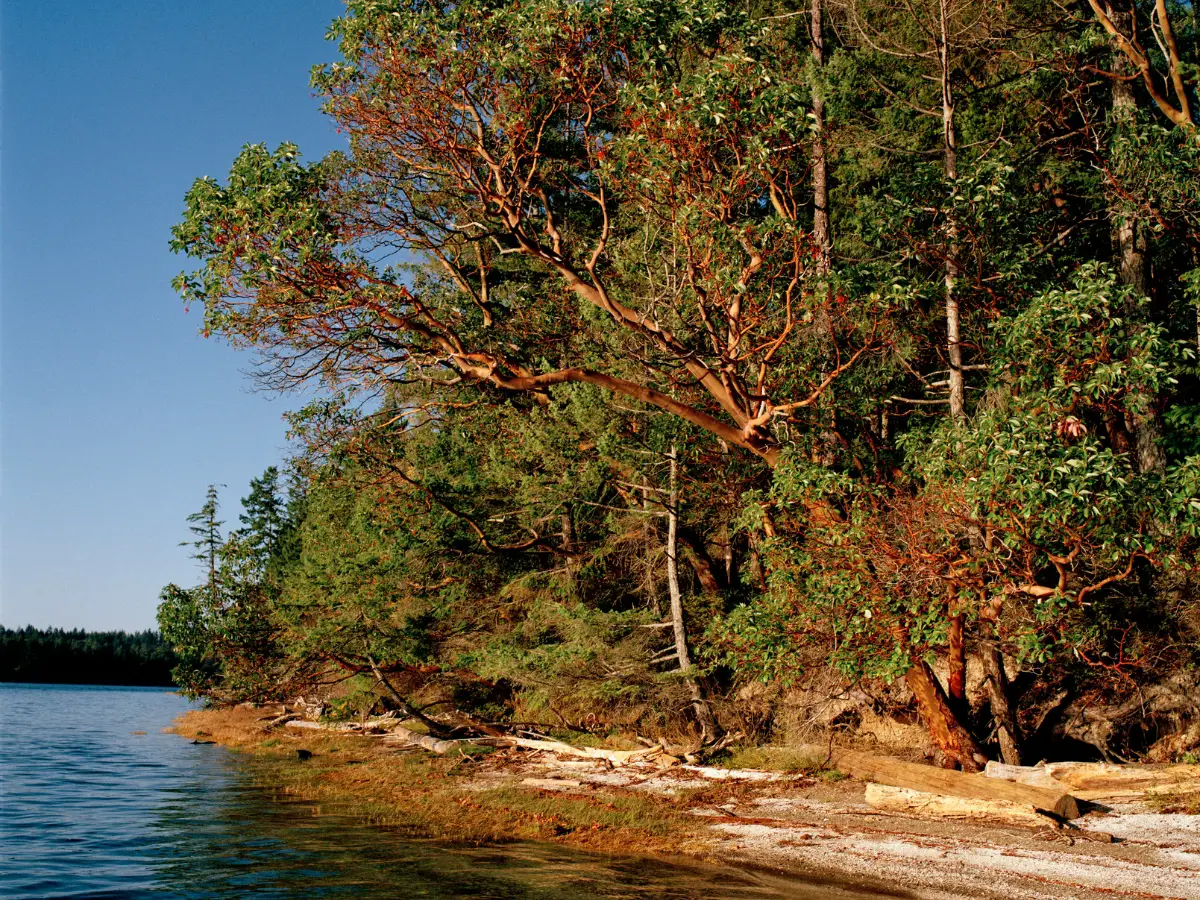
California Trees and Their Habitats
Northern California
Northern California is home to a variety of trees, including the Coastal Redwood, Douglas Fir, and Sitka Spruce. These trees thrive in the cool, moist climate of the region, which is characterized by mild, wet winters and dry summers. The Coastal Redwood, the tallest tree species in the world, can be found in this region and can grow up to 379 feet tall.
Southern California
Southern California is home to a diverse array of trees, including the California Fan Palm, Joshua Tree, and Coast Live Oak. These trees are adapted to the hot, dry climate of the region, which is characterized by long, hot summers and mild winters. The California Fan Palm, which can grow up to 75 feet tall, is a common sight in this region.
Coastal Regions
The coastal regions of California are home to a variety of trees, including the Monterey Pine, Monterey Cypress, and California Bay Laurel. These trees thrive in the cool, foggy climate of the region, which is characterized by mild, wet winters and cool summers. The Monterey Pine, which can grow up to 100 feet tall, is a common sight in this region.
Sierra Nevada Mountains
The Sierra Nevada Mountains are home to a variety of trees, including the Giant Sequoia, Lodgepole Pine, and Whitebark Pine. These trees thrive in the high-altitude climate of the region, which is characterized by cold, snowy winters and warm summers. The Giant Sequoia, which can grow up to 311 feet tall, is a common sight in this region.
Mojave Desert
The Mojave Desert is home to a variety of trees, including the Joshua Tree, Desert Willow, and Mesquite. These trees are adapted to the hot, dry climate of the region, which is characterized by long, hot summers and mild winters. The Joshua Tree, which can grow up to 40 feet tall, is a common sight in this region.
California’s diverse climate and topography create a wide range of habitats for trees to thrive in. From the towering Coastal Redwoods of Northern California to the hardy Joshua Trees of the Mojave Desert, there is a tree for every region of the state.
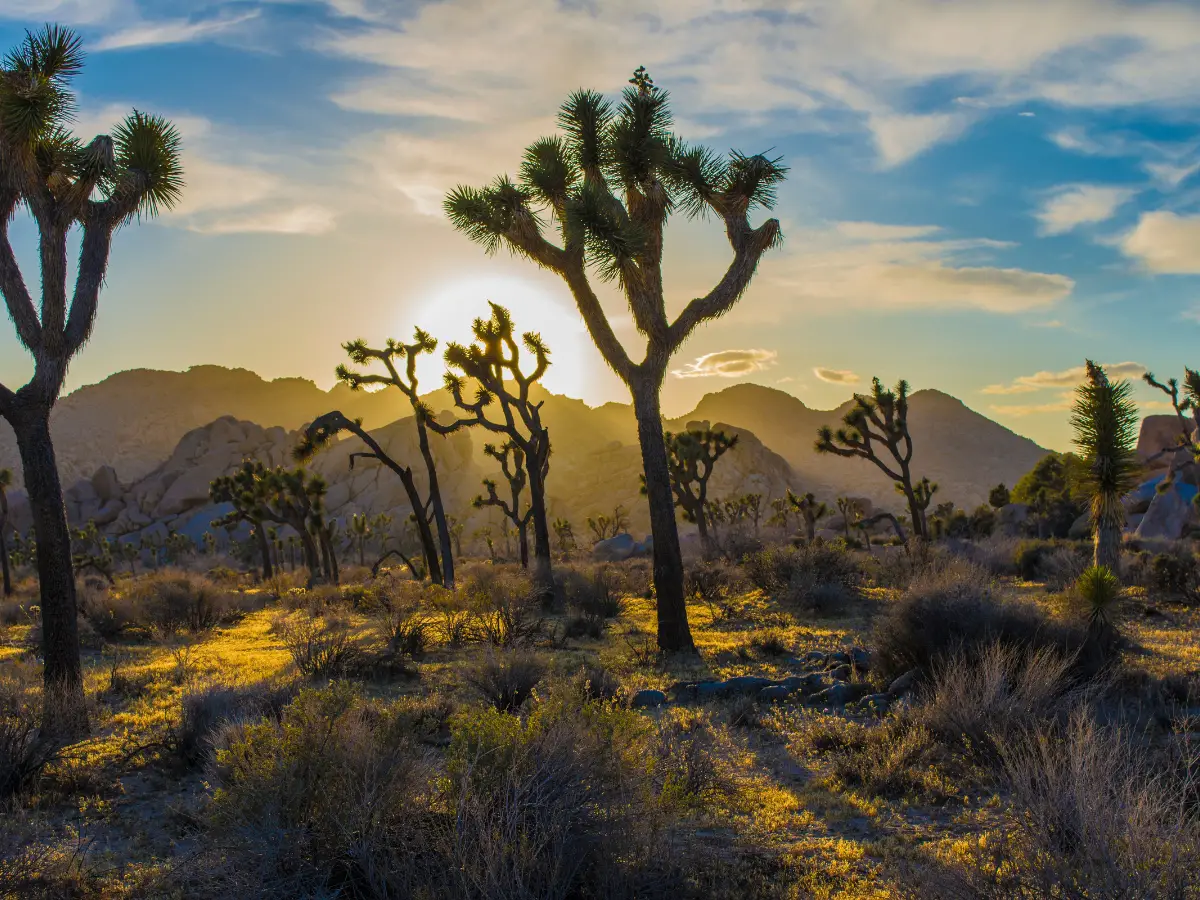
California Trees and Climate
California is home to a diverse range of tree species that have adapted to the state’s unique climate. The climate in California varies depending on the region, but it is generally characterized by hot, dry summers and mild, wet winters. The state’s climate is influenced by a variety of factors, including its proximity to the Pacific Ocean, its latitude, and its topography.
Trees in California have evolved to survive in a range of different climates. Some species, such as the blue oak, are able to thrive in dry, arid conditions, while others, like the tecate cypress, are adapted to the cool, moist climate of the coastal mountains.
The amount of sunlight that trees in California receive can also vary depending on the region. Trees in the southern part of the state are exposed to more sunlight than those in the north, due to the state’s latitude.
Temperature is another important factor that affects the growth and survival of trees in California. Trees in the state are adapted to a wide range of temperatures, from the hot, dry conditions of the desert to the cool, foggy climate of the coast.
Water is perhaps the most important factor that affects the growth and survival of trees in California. Many species of trees in the state are adapted to survive in areas with limited water, such as the blue oak. Other species, such as the desert willow, are adapted to thrive in areas with more water.
Overall, California’s climate is unique and diverse, and the state’s trees have adapted to survive in a range of different conditions. Whether you live in the hot, dry desert or the cool, foggy coast, there is a tree species in California that is well-suited to your climate.
California Trees and Soil
California’s diverse landscapes and ecosystems support a wide range of tree species. However, soil type plays a crucial role in determining which trees thrive in a particular region. Understanding the relationship between trees and soil is essential for successful tree planting and management.
Soil is the foundation of any tree’s growth. The soil’s texture, composition, and structure determine how well it can hold water, nutrients, and oxygen, which are essential for tree growth. California’s soils are diverse and range from sandy to clayey, with varying levels of nutrients.
Some tree species, such as the Western Sycamore (Platanus racemosa), thrive in moist, well-drained soils, while others, such as the Bishop Pine (Pinus muricata), prefer drier soils. Knowing the soil type and its characteristics is crucial for selecting the right tree species for a particular location.
Roots play a vital role in a tree’s ability to access water and nutrients from the soil. The root system of a tree is also critical for anchoring the tree and providing stability against wind and other environmental factors. California’s native trees have evolved to adapt to different soil types and conditions, developing unique root systems that help them thrive in their specific environments.
Some tree species, such as the Giant Sequoia (Sequoiadendron giganteum), have shallow root systems that spread out widely to absorb nutrients from the surface soil. Others, such as the Engelmann Oak (Quercus engelmannii), have deep taproots that can reach underground water sources. Understanding a tree’s root system is crucial for planting and maintaining healthy trees.
In summary, soil type and root systems play a crucial role in determining which tree species thrive in a particular region. Understanding the relationship between trees and soil is essential for successful tree planting and management. By selecting the right tree species for a particular location and understanding their root systems, we can ensure healthy and thriving trees in California’s diverse landscapes and ecosystems.
Importance of California Trees
Trees in California play a vital role in the state’s ecosystem. They provide shade, help prevent erosion, and support the growth of native perennials. Oak woodlands, in particular, are an essential habitat for many wildlife species, including birds, mammals, and insects.
Shade is a crucial benefit of trees in California, especially in the hot, dry climate. Trees help to cool the air around them and provide a respite from the intense heat. They also provide shade for people, animals, and plants, reducing the risk of heat-related illnesses and death.
Oak woodlands are a unique ecosystem found throughout California. They provide habitat for many species, including the endangered California condor. Oak woodlands also help to prevent soil erosion and provide a home for many native perennials, including California poppies and lupines.
Native perennials are an essential part of California’s ecosystem, and trees play a critical role in their growth and survival. Trees provide shade, shelter, and nutrients for these plants, helping them to thrive in the state’s unique climate.
In conclusion, trees in California are essential for maintaining a healthy ecosystem. They provide shade, support the growth of native perennials, and provide habitat for many wildlife species. Oak woodlands, in particular, are an essential part of California’s ecosystem, providing habitat for many endangered species and helping to prevent soil erosion.
Caring for California Trees
Caring for California trees is essential to ensure their longevity and health. With proper care, you can help your trees thrive and contribute to the natural beauty of the state. Here are some tips for taking care of your California trees:
Watering
Watering is crucial for the growth and survival of trees. In California, where droughts are common, it is essential to water trees regularly. However, overwatering can also be harmful to trees. Here are some tips for watering your California trees:
- Water deeply and infrequently. This will encourage the roots to grow deeper and make the tree more resilient to drought.
- Water early in the morning or late in the evening to reduce evaporation.
- Use a drip irrigation system or a soaker hose to water trees slowly and deeply.
- Avoid watering the foliage, as this can lead to fungal diseases.
Sunlight
Most California trees require full sun to grow and thrive. However, some trees, such as redwoods, prefer partial shade. Here are some tips for providing the right amount of sunlight for your California trees:
- Plant trees in the right location. Consider the amount of sunlight the tree will receive throughout the day.
- Prune trees to remove any branches that are blocking sunlight.
- Provide shade for young trees to protect them from excessive heat and sunburn.
Soil
The soil in California varies widely depending on the region. Some areas have sandy soil, while others have clay soil. Understanding the type of soil your tree is growing in can help you provide the right nutrients and care. Here are some tips for caring for California trees based on soil type:
- Sandy soil: Water more frequently as sandy soil drains quickly and can dry out faster.
- Clay soil: Water less frequently as clay soil retains moisture for longer periods.
- Amend soil with organic matter, such as compost, to improve soil quality and fertility.
Roots
The roots of California trees are essential for their survival and growth. Here are some tips for caring for tree roots:
- Avoid compacting soil around the tree, as this can damage the roots and reduce their ability to absorb water and nutrients.
- Mulch around the base of the tree to protect the roots and retain moisture.
- Avoid planting other trees or plants too close to the tree, as this can compete for water and nutrients.
By following these tips, you can help your California trees thrive and contribute to the natural beauty of the state.
Frequently Asked Questions
What are some popular shade trees in native California?
Some popular shade trees in native California include the Coast Live Oak, the California Sycamore, and the Western Redbud. These trees are not only great for providing shade but also add aesthetic value to your yard.
What are some common trees found in Los Angeles?
Some common trees found in Los Angeles include the Mexican Fan Palm, the Jacaranda, and the Southern Magnolia. These trees are popular for their beauty and ability to thrive in the Los Angeles climate.
What are some famous trees in California?
Some famous trees in California include the General Sherman Tree, the largest tree in the world, and the Lone Cypress, a tree that has withstood the test of time on the coast of Monterey. These trees are not only famous for their size and age but also for their cultural significance.
How can I identify trees in Northern California?
To identify trees in Northern California, you can use a field guide or an app like iNaturalist. Look for identifying features such as the shape of the leaves, the bark texture, and the arrangement of the branches.
What are the most common trees in Northern California?
The most common trees in Northern California include the Douglas Fir, the Redwood, and the Lodgepole Pine. These trees are important for the ecosystem and provide habitat for wildlife.
What are some small native trees in California?
Some small native trees in California include the California Buckeye, the Toyon, and the Manzanita. These trees are great for adding diversity to your yard and are adapted to the California climate.





